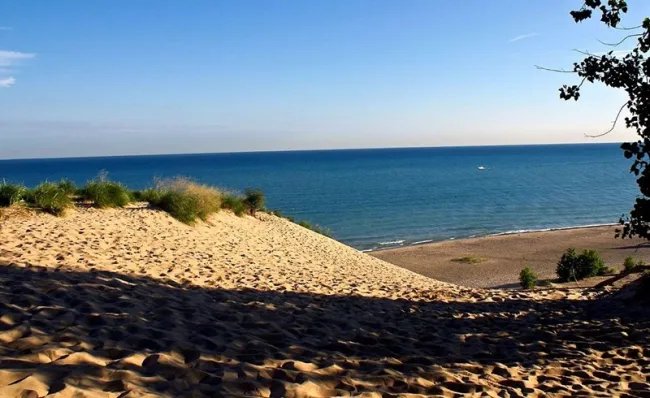
Indiana Dunes National Park, located on the southern shore of Lake Michigan, is a stunning landscape that spans 15,000 acres and offers a unique blend of natural beauty and rich biodiversity. Known for its towering sand dunes, diverse ecosystems, and beautiful shorelines, the park is a haven for outdoor enthusiasts, wildlife lovers, and beachgoers alike. With over 50 miles of trails, Indiana Dunes National Park is one of the most ecologically diverse parks in the U.S., featuring forests, wetlands, prairies, and, of course, dunes.
History of the Park
Indiana Dunes National Park was officially designated as a national park in 2019, but its history as a protected area dates back to the early 20th century. Efforts to preserve the dunes began as early as the 1910s, spearheaded by local naturalists and conservationists who recognized the importance of the unique ecosystems present in the area. In 1966, the site was designated as Indiana Dunes National Lakeshore, before eventually gaining national park status. The creation of the park was a testament to the dedication of local activists and federal efforts to preserve natural spaces for public enjoyment.
Main Features
Indiana Dunes National Park is celebrated for its diverse landscapes, ranging from sandy beaches and dunes to marshes, bogs, and oak savannas. The towering dunes, some reaching heights of nearly 200 feet, are a major draw for visitors. Beyond the dunes, the park also features scenic beaches along Lake Michigan, offering stunning views and opportunities for swimming, sunbathing, and picnicking. Birdwatching is another popular activity due to the park's position along a major migratory bird route, with over 350 species recorded in the area.
Types of Trails
The park boasts more than 50 miles of trails, catering to various levels of difficulty and interests:
- Dune Ridge Trail: A moderate 0.7-mile loop offering panoramic views of the dunes and the surrounding landscape.
- Cowles Bog Trail: A more challenging 4.7-mile trail through wetlands, dunes, and forests, perfect for wildlife observation.
- Heron Rookery Trail: An easy 3.3-mile trail that winds through a wooded area along the Little Calumet River, ideal for spring wildflower viewing.
- Paul H. Douglas Trail: A 3.4-mile trail that showcases the park's dunes, wetlands, and beach ecosystems.
Crowd Expectations and Annual Visitors
Indiana Dunes National Park is a popular destination, drawing over 3 million visitors annually. Crowds tend to be heaviest during the summer months, particularly on weekends when beachgoers flock to the shores of Lake Michigan. While the park can feel busy, especially near the beach areas, there are plenty of trails and less frequented spots that offer a more peaceful experience. Fall and spring are also popular times to visit, providing cooler temperatures and fewer visitors.
Accessibility for Seniors
The park is generally senior-friendly, with a variety of amenities and services tailored to older visitors. Many of the park's trails are relatively short and flat, making them accessible for seniors who may have limited mobility. The Dunewood Campground and several picnic areas offer accessible facilities, making it easy for seniors to enjoy a day out in nature.
Accessibility for Wheelchairs
Indiana Dunes National Park offers several wheelchair-accessible features, including the West Beach picnic area and the Portage Lakefront and Riverwalk. The West Beach area includes an accessible boardwalk that leads to a viewing platform, providing visitors with scenic views of Lake Michigan. Accessible restrooms and parking spaces are available throughout the park, and some trails, like the Calumet Dunes Trail, are wheelchair-friendly.
Park Amenities
Indiana Dunes National Park offers a range of amenities to ensure visitors have a comfortable and enjoyable experience. These include picnic areas, restrooms, visitor centers with exhibits and educational programs, and several designated swimming areas. The park is also equipped with lifeguards during the summer season at certain beaches.
Camping Facilities
The park has one main campground, the Dunewood Campground, which offers 67 campsites nestled in a wooded area. The campground is open from April through October and features modern amenities, including restrooms, showers, and potable water. Though the campground is close to the park’s main attractions, it offers a peaceful environment for those looking to escape into nature.
Access to Lodging
For visitors who prefer more comfortable accommodations, there are several hotels and lodges located just outside the park in nearby communities such as Michigan City and Chesterton. Options range from budget-friendly motels to more luxurious resorts, all within easy driving distance of the park’s main attractions.
Pet-Friendliness
Indiana Dunes National Park is pet-friendly, with several designated areas where pets are allowed, including certain beaches and trails. However, pets must be kept on a leash at all times, and owners are responsible for cleaning up after their pets. Pet-friendly trails include the Glenwood Dunes Trail and the Tolleston Dunes Trail.
Best Months to Visit
The best months to visit Indiana Dunes National Park are from May to September when the weather is warm and conducive to outdoor activities. However, the fall months of October and November offer beautiful foliage and cooler temperatures, making for a more peaceful experience with fewer crowds. Winter also provides opportunities for cross-country skiing and snowshoeing, though some amenities may be limited.
Conclusion
Indiana Dunes National Park is a diverse and dynamic destination that offers something for everyone, from families looking for a beach day to avid hikers and wildlife enthusiasts. With its rich history, diverse ecosystems, and accessibility features, the park is a must-visit for nature lovers and adventurers alike. Whether you’re interested in exploring the towering dunes, birdwatching, or simply relaxing by the lake, Indiana Dunes National Park provides a unique and memorable experience year-round.



